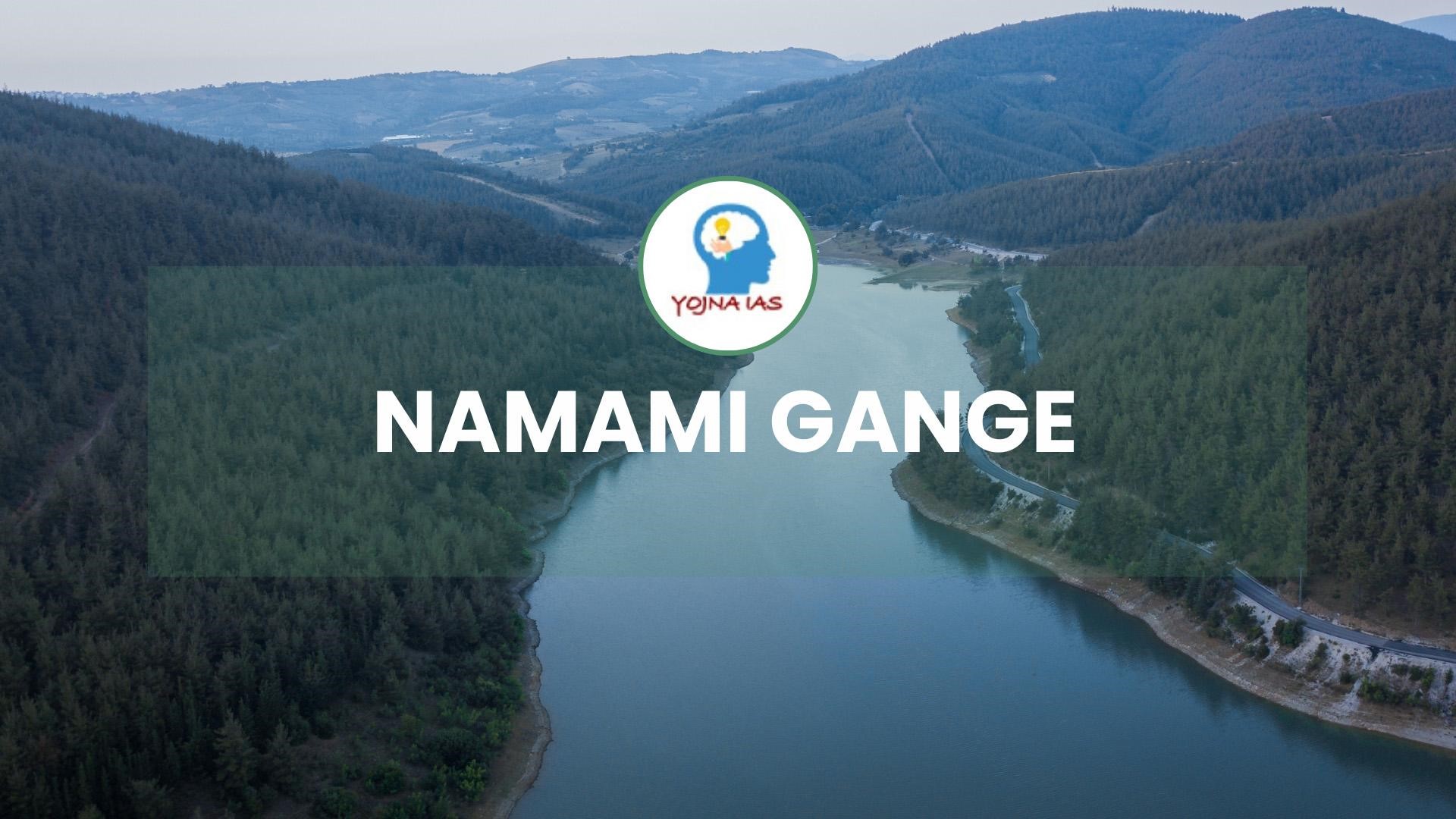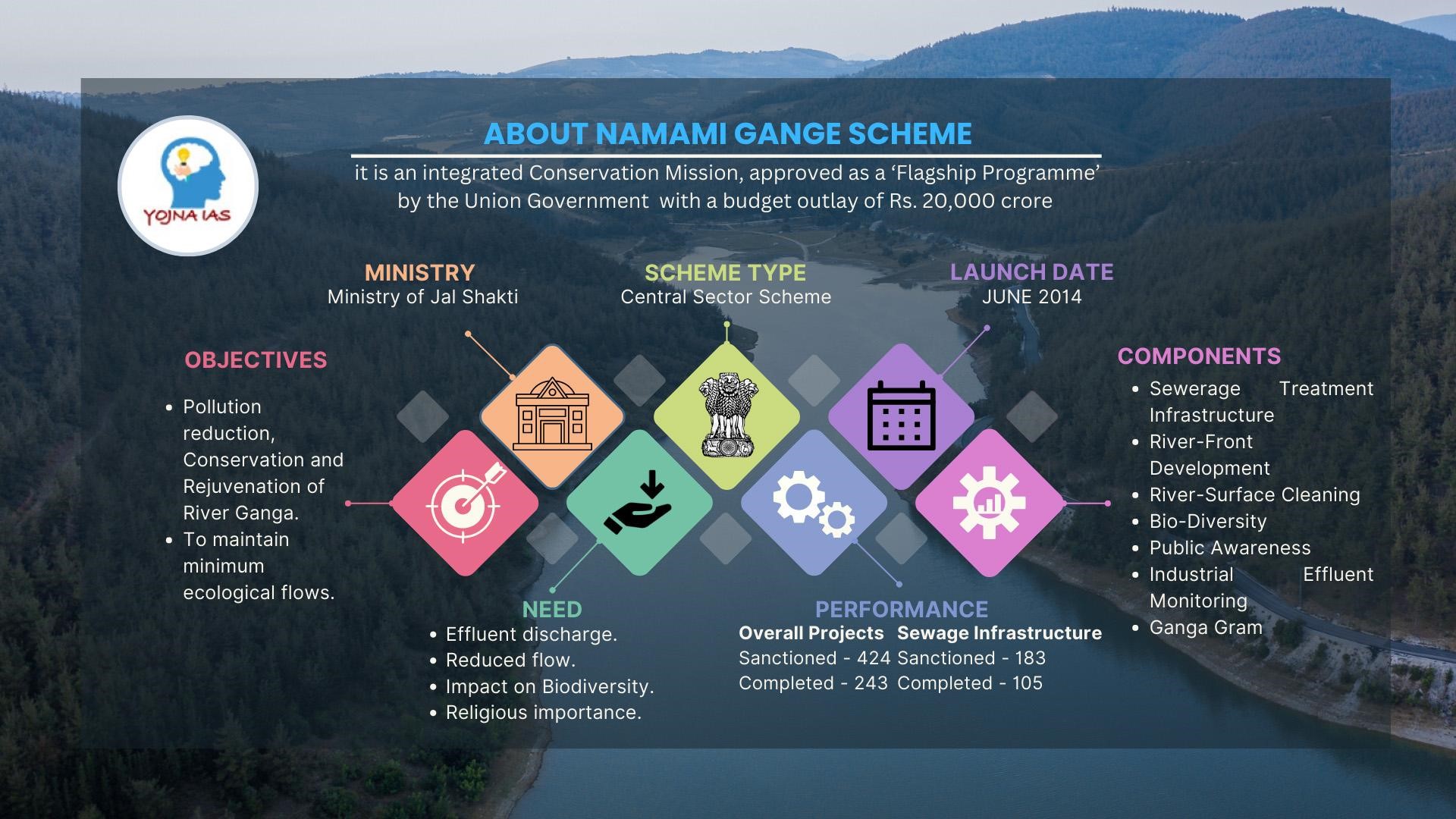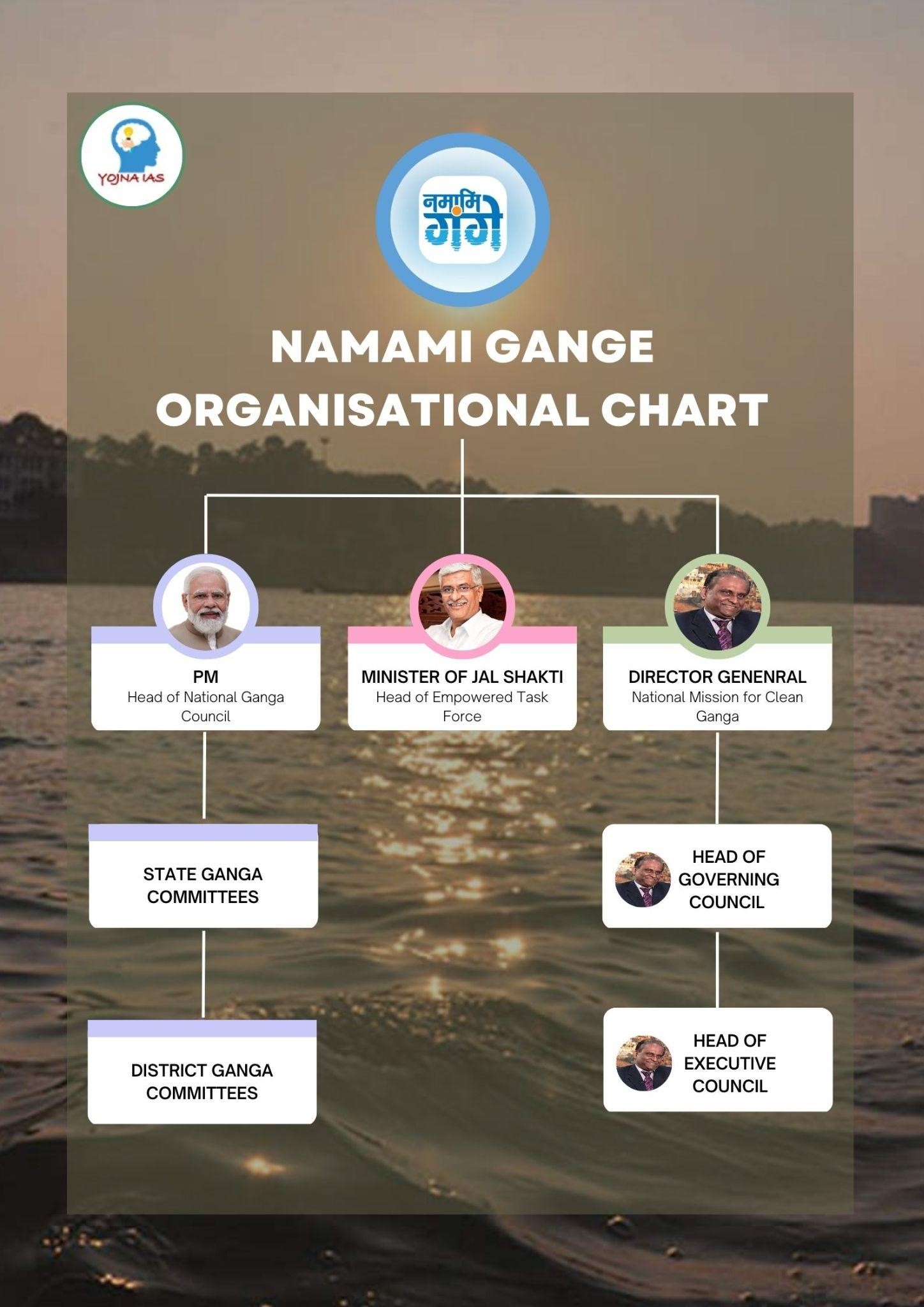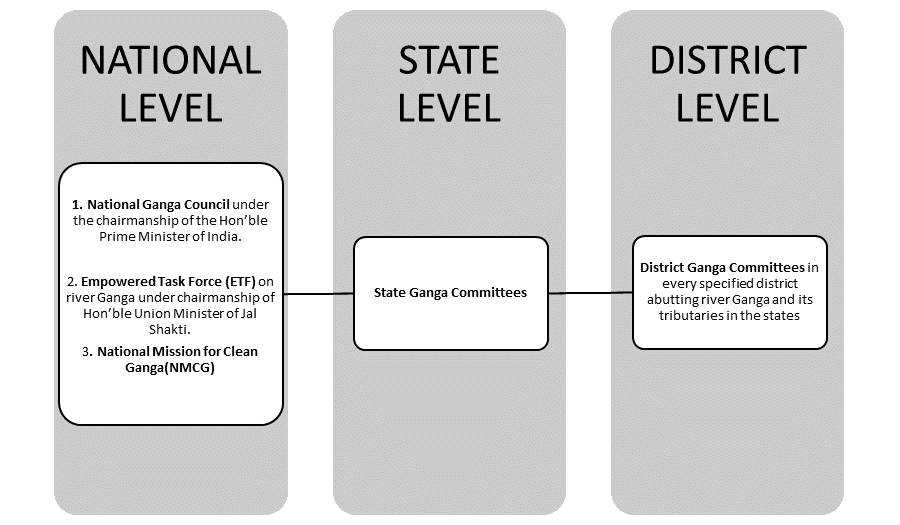13 Apr 2023 Namami Gange Programme
Namami Gange Programme
This article covers “Daily Current Affairs” and the topic details “Namami Gange Programme”. Namami Gange is the flagship scheme of the government to reduce pollution and rejuvenate the River Ganga. The topic “Namami Gange ” has relevance in the “Environment” section for the UPSC CSE exam.

Namami Gange Programme
For Prelims:
- What is Namami Gange?
- What are the features of the Namami Gange programme?
Which ministry is involved in the implementation of the Namami Gange programme?
For Mains
GS 3:Environment
- What is the status of the Namami Gange programme?
- What are the issues and challenges in the implementation of the Namami Gange programme?
- What are the measures required for the success of the Namami Gange programme?
- Way forward
Why in the news?
Namami Gange Signs Agreement With 49 Universities To Inspire Youth Towards Water Conservation & River Rejuvenation.
What is the Namami Gange Programme?
‘Namami Gange Programme’, is an integrated Conservation Mission, approved as a ‘Flagship Programme’ by the Union Government in June 2014 with a budget outlay of Rs. 20,000 crores.

Namami Gange Programme
What are the objectives of the Namami Gange programme?
The schema aims to achieve the objectives of effective pollution reduction, conservation, and rejuvenation of the National River Ganga.
What are the main pillars of the Namami Gange Programme?
Namai Gange is built on an integrated approach that focuses on other areas linked to the conservation of the river. The main pillars associated with Namami Gange are as follows:
- Sewerage Treatment Infrastructure: This involves the development of infrastructure intended for the proper disposal and treatment of sewage waste.
- River-Front Development: This involves the development of the riverfront for conservation and recreational purposes.
- River-Surface Cleaning: This involves the cleaning of the river surface of the various contaminants which are of polluting nature.
- Biodiversity: This aims to preserve the flora and fauna attached to the river, Afforestation
- Public Awareness: This aims to make the people in the adjoining areas to cooperate and participate in the cleaning of the river.
- Industrial Effluent Monitoring: This involves checking the sources of pollution. This may involve factories and industries which are producing toxic wastes.
- Ganga Gram: The villages situated on the bank of River Ganga will be developed in a holistic way.
Which ministry is involved in the implementation of the Namami Gange programme?
- Namami Gange is being operated under the Department of Water Resources, River Development, and Ganga Rejuvenation, Ministry of Jal Shakti.
What is the governing structure of the Namami Gange Programme?
- The Namami Gange programme envisages a five-tier structure at the national, state, and district levels to take measures for prevention, control, and abatement of environmental pollution in river Ganga and to ensure continuous adequate flow of water so as to rejuvenate the river Ganga as below:

Namami Gange Organizational Chart

Structure of Namami Gange Programme
What is the status of the Namami Gange programme?
Overall Projects
Sanctioned – 424
Completed – 243
Sewage Infrastructure
Sanctioned – 183
Completed – 105
What are the issues and challenges in the implementation of the Namami Gange programme?
While the programme has made some progress toward achieving its objectives, it still faces several issues and challenges that affect its implementation. Some of these issues and challenges are:
- Coordination: The Namami Gange programme involves multiple stakeholders, including various government departments, state governments, NGOs, and private entities. The coordination between these stakeholders has been a challenge, and effective collaboration is essential to achieve the programme’s objectives.
- Disposal of waste: One of the significant challenges is the disposal of waste generated from various sources. The waste management infrastructure is inadequate, and waste disposal into the river continues to be a problem.
- Lack of Awareness: Despite various campaigns to create awareness, the general public’s lack of awareness of the importance of the river and the need for its conservation remains a challenge.
- Industrial Pollution: Industries located along the river banks are a major source of pollution. These industries continue to release toxic effluents into the river, affecting the water quality and aquatic life.
- Limited Focus: The programme has mainly focused on surface cleaning and building infrastructure. Long-term sustainable measures are yet to be put in place, and it is essential to shift the focus towards river ecology and conservation.
What are the measures required for the success of the Namami Gange?
Several measures are required for the success of the Namami Gange programme, some of which are:
- Effective coordination: The programme involves multiple stakeholders, and effective coordination is critical to its success. The government should establish a mechanism to facilitate coordination between the various stakeholders, including state governments, NGOs, and private entities.
- Improved waste management: The programme should focus on improving waste management infrastructure to prevent the disposal of waste into the river. The government should establish waste treatment plants and enforce strict regulations on the disposal of waste.
- Public awareness: Creating awareness among the general public about the importance of the river and the need for its conservation is essential. The government should launch awareness campaigns to educate the public about the benefits of a clean river and encourage their participation in conservation efforts.
- Industrial pollution control: The government should enforce strict regulations on industries located along the river banks to prevent the release of toxic effluents into the river. Industries should be encouraged to adopt sustainable practices and technologies to reduce their environmental impact.
- Focus on river ecology and conservation: Namami Gange programme should shift its focus towards long-term sustainable measures such as the restoration of the river ecology and conservation of the river’s biodiversity. The government should explore scientific and technological solutions to achieve this objective.
Way forward
There is a need for a sustained focus on the cleaning of the river Ganga as it has a deep impact on the environment and biodiversity. Adequate funding, improved coordination, plugging sources of pollution, checking the discharge of effluents, and raising public awareness is the key. Thus, a multi-stakeholder and integrated approach is needed for the successful implementation of the Namami Gange Programme.
Sources:
Get Current Affairs from Yojna IAS


No Comments